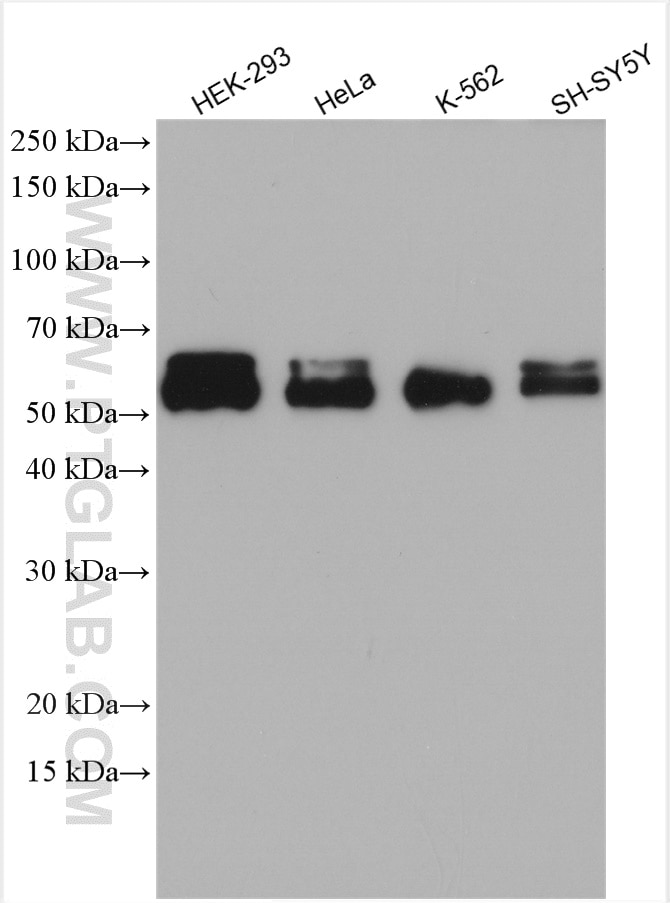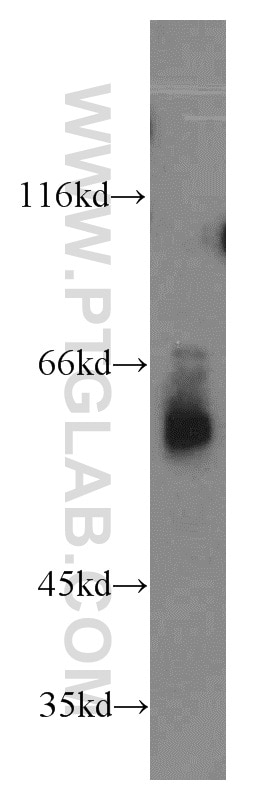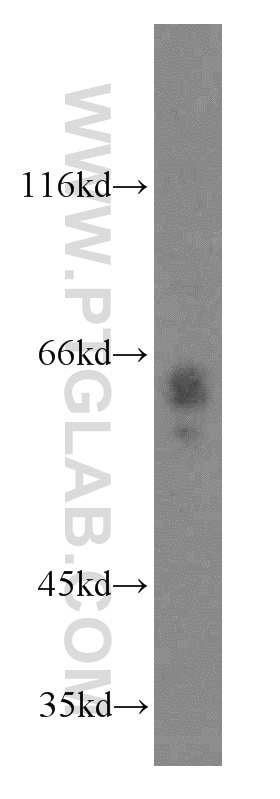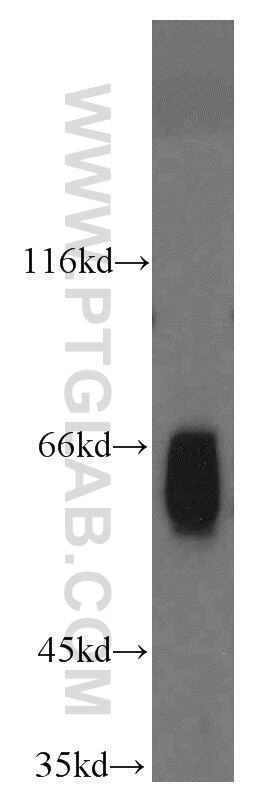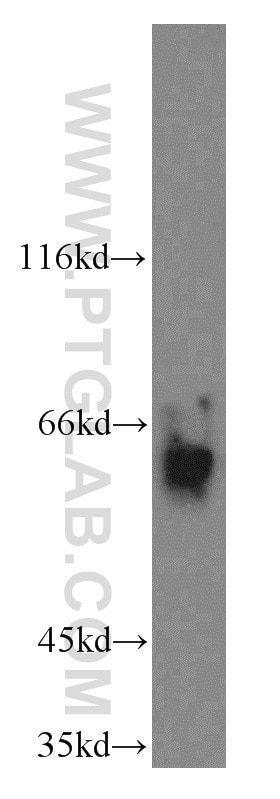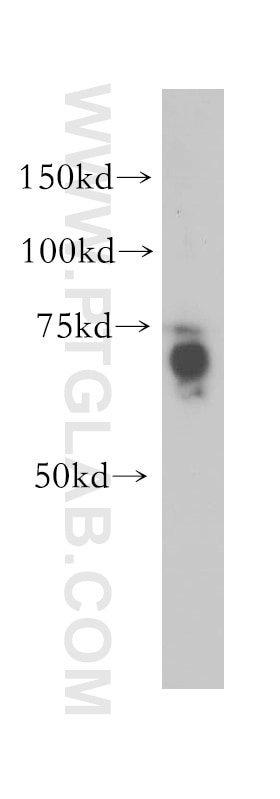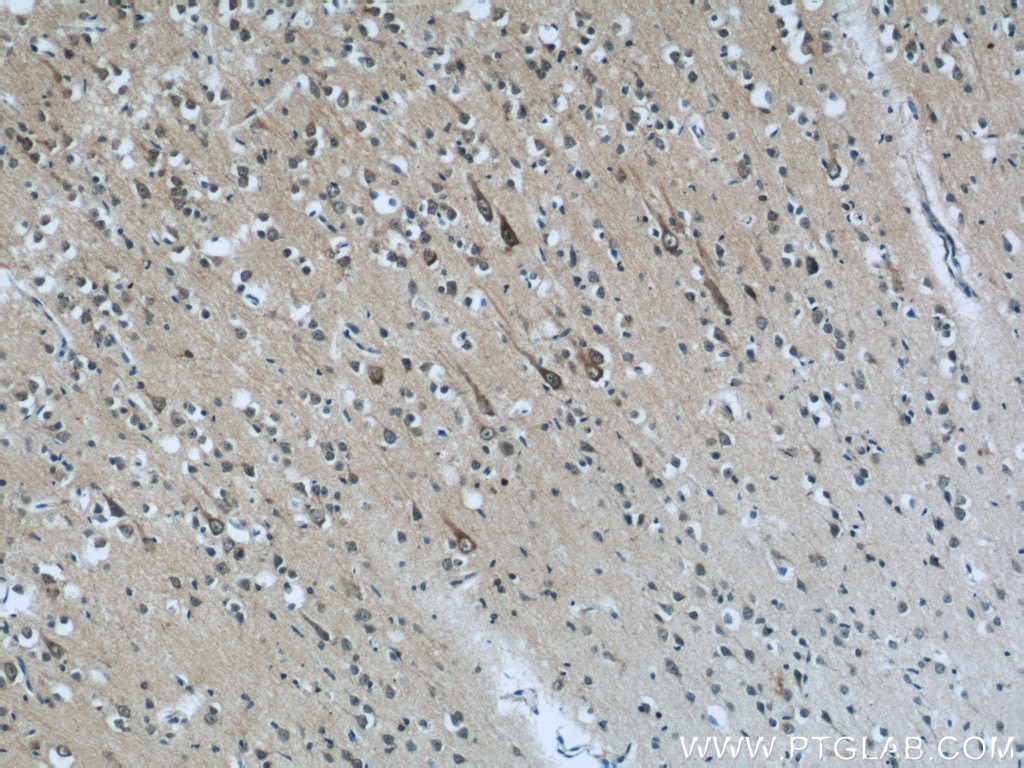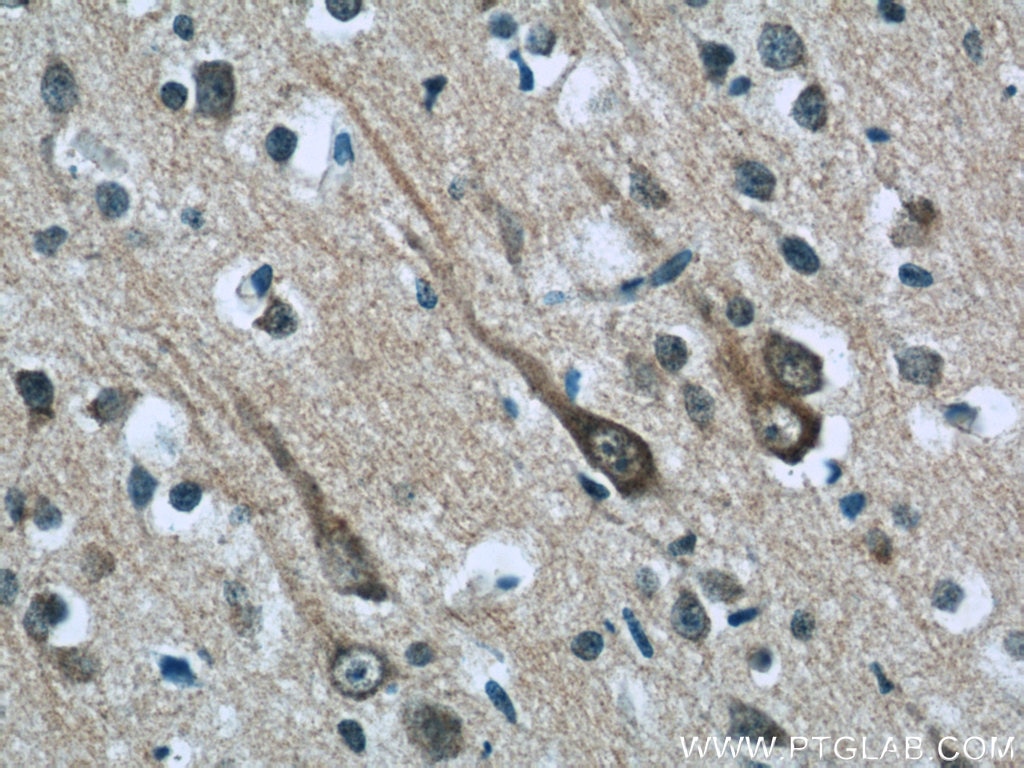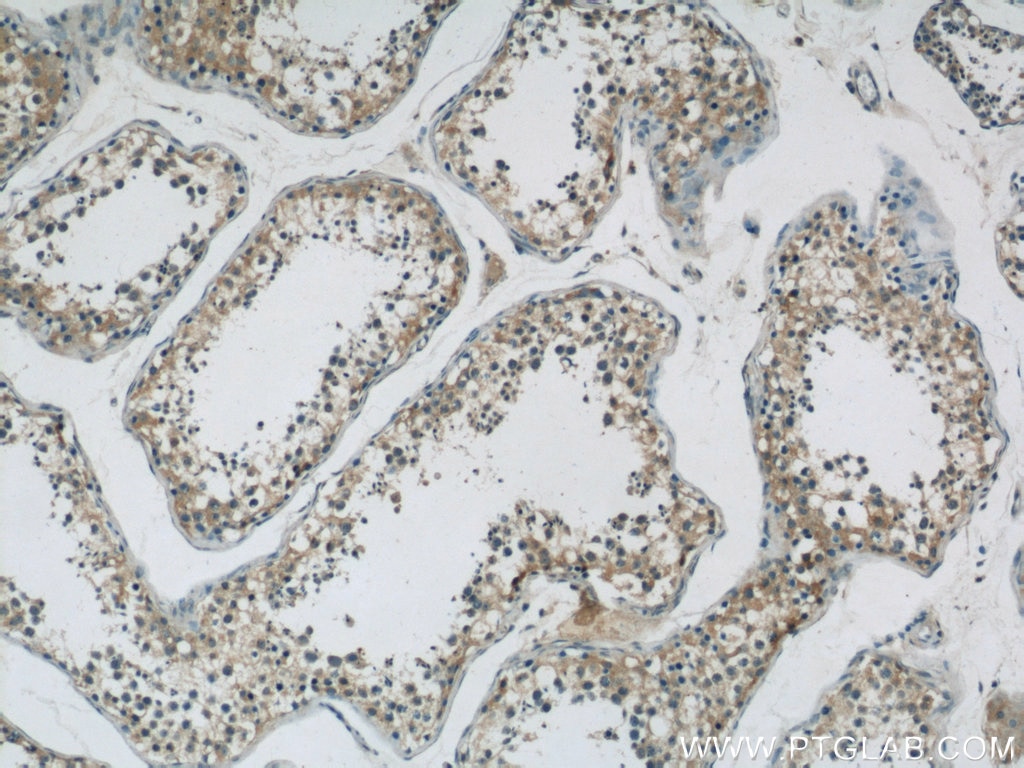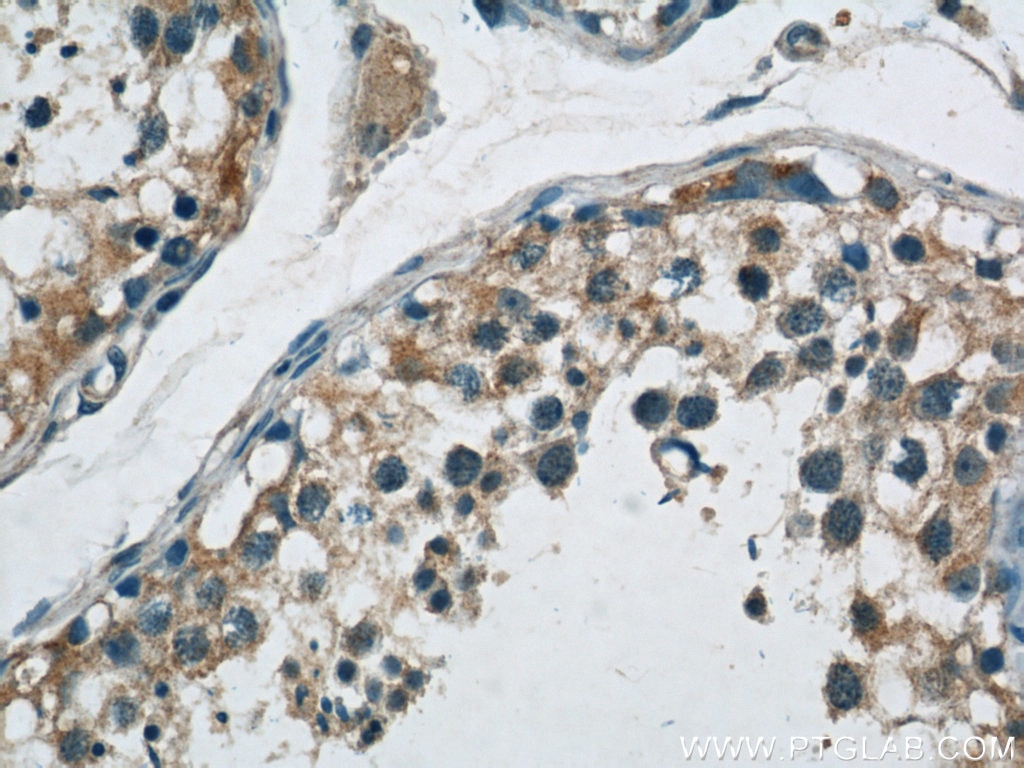Tested Applications
| Positive WB detected in | HEK-293 cells, mouse heart tissue, mouse uterus tissue, mouse testis tissue, mouse brain tissue, HeLa cells, K-562 cells, SH-SY5Y cells |
| Positive IHC detected in | human brain tissue, human testis tissue Note: suggested antigen retrieval with TE buffer pH 9.0; (*) Alternatively, antigen retrieval may be performed with citrate buffer pH 6.0 |
Recommended dilution
| Application | Dilution |
|---|---|
| Western Blot (WB) | WB : 1:2000-1:6000 |
| Immunohistochemistry (IHC) | IHC : 1:20-1:200 |
| It is recommended that this reagent should be titrated in each testing system to obtain optimal results. | |
| Sample-dependent, Check data in validation data gallery. | |
Published Applications
| WB | See 3 publications below |
| CoIP | See 1 publications below |
Product Information
14890-1-AP targets ABI2 in WB, IHC, CoIP, ELISA applications and shows reactivity with human, mouse, rat samples.
| Tested Reactivity | human, mouse, rat |
| Cited Reactivity | human, mouse |
| Host / Isotype | Rabbit / IgG |
| Class | Polyclonal |
| Type | Antibody |
| Immunogen |
CatNo: Ag6679 Product name: Recombinant human ABI2 protein Source: e coli.-derived, PGEX-4T Tag: GST Domain: 1-275 aa of BC001439 Sequence: MAELQMLLEEEIPGGRRALFDSYTNLERVADYCENNYIQSADKQRALEETKAYTTQSLASVAYLINTLANNVLQMLDIQASQLRRMESSINHISQTVDIHKEKVARREIGILTTNKNTSRTHKIIAPANLERPVRYIRKPIDYTILDDIGHGVKVSTQNMKMGGLPRTTPPTQKPPSPPMSGKGTLGRHSPYRTLEPVRPPVVPNDYVPSPTRNMAPSQQSPVRTASVNQRNRTYSSSGSSGGSHPSSRSSSRENSGSGSVGVPIAVPTPSPPSV Predict reactive species |
| Full Name | abl interactor 2 |
| Calculated Molecular Weight | 56 kDa |
| Observed Molecular Weight | 52-56 kDa |
| GenBank Accession Number | BC001439 |
| Gene Symbol | ABI2 |
| Gene ID (NCBI) | 10152 |
| RRID | AB_2288997 |
| Conjugate | Unconjugated |
| Form | Liquid |
| Purification Method | Antigen affinity purification |
| UNIPROT ID | Q9NYB9 |
| Storage Buffer | PBS with 0.02% sodium azide and 50% glycerol, pH 7.3. |
| Storage Conditions | Store at -20°C. Stable for one year after shipment. Aliquoting is unnecessary for -20oC storage. 20ul sizes contain 0.1% BSA. |
Protocols
| Product Specific Protocols | |
|---|---|
| IHC protocol for ABI2 antibody 14890-1-AP | Download protocol |
| WB protocol for ABI2 antibody 14890-1-AP | Download protocol |
| Standard Protocols | |
|---|---|
| Click here to view our Standard Protocols |
Publications
| Species | Application | Title |
|---|---|---|
Nat Commun GRAF1 integrates PINK1-Parkin signaling and actin dynamics to mediate cardiac mitochondrial homeostasis | ||
Nat Commun hnRNP A1 dysfunction alters RNA splicing and drives neurodegeneration in multiple sclerosis (MS) | ||
Nat Cell Biol Actin cytoskeleton vulnerability to disulfide stress mediates disulfidptosis |

